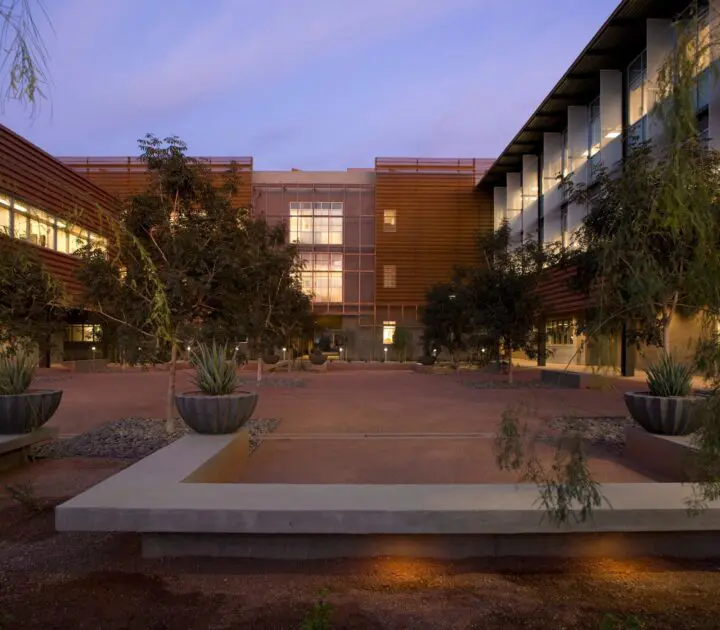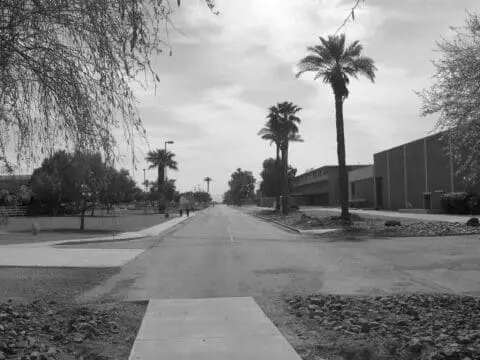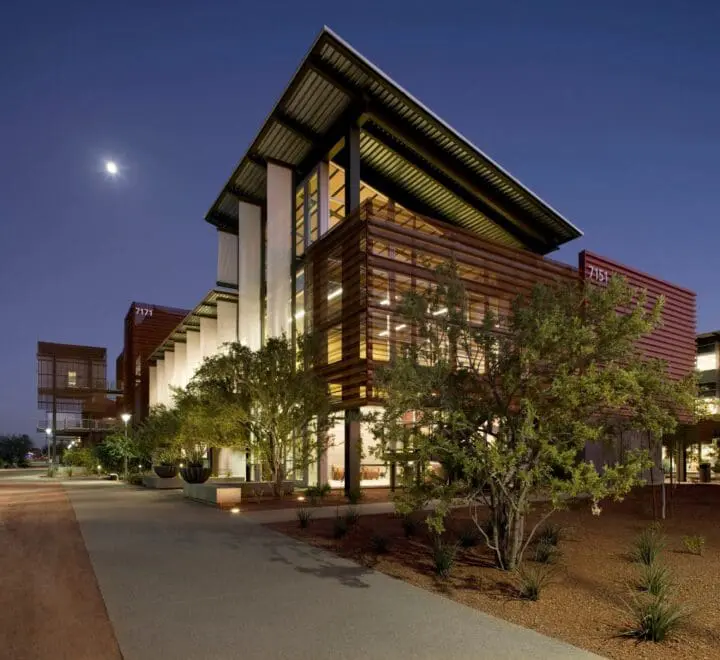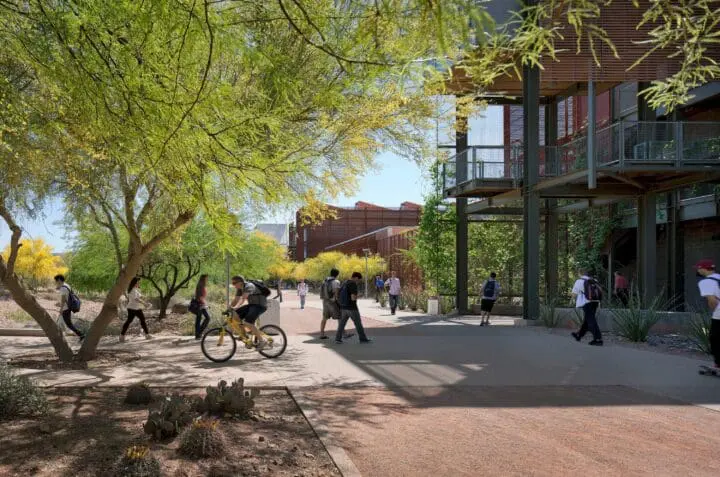
Arizona State University Polytechnic Academic District
ASU Polytechnic’s Academic District transforms a decommissioned Air Force base into an inviting pedestrian district and regenerative landscape that creates a new identity for the campus. Five high-performance buildings are integrated with three existing structures, providing classroom and laboratory space for four academic colleges focused on engineering and the sciences. Buildings are configured around courtyards and linked by a series of open air atria, portals, and arcades to take advantage of the seasonally temperate climate for exterior circulation. These shady elements provide environmentally sensitive social spaces that maximize visibility, daylighting, and a sense of community while minimizing energy use.
In collaboration with RSP Architects.
Virtually every design decision was driven by a desire to connect students and faculty to Mesa’s desert landscape in a manner that would create a more sustainable and vibrant learning community. Ecological restoration and stormwater management were two main priorities for the new campus district. Through habitat restoration and landscape design, stormwater is managed entirely on the surface through a series of channels and acequias that nourish the formal courtyards, including a desert seep, pistachio orchard, and the desert mall. Over 66% of the site was planted with native or adaptive species and 40,000 square feet of walking areas were installed with stabilized decomposed granite, rather than concrete, to alleviate heat island effect.
By segmenting the 245,000-square-foot program into five high performance buildings, the design team created four landscaped courtyards linked together by a series of portals and arcades, resulting in a pedestrian-friendly campus. The five new buildings more than double the existing academic space, providing laboratories and classrooms for engineering, physics, anatomy and physiology, biology, chemistry, technology education, math education, and the arts.
Lake Flato demonstrated a sophisticated understanding of academic programming requirements and they delivered an inspired solution of architectural design, landscape, and materials that was carefully calibrated to meet the project site.Ron McCoy, FAIA
Former University Architect, Arizona State University
The campus was formerly a commuter campus without a strong identity. The design team was able to establish community by turning the campus inside-out. The elimination of the traditional double-loaded corridor in lieu of the open air atria has strengthened the campus’ sense of place by connecting students to the natural environment. This strategy draws students through the buildings, increasing their opportunity to engage in the social and academic life of the campus.
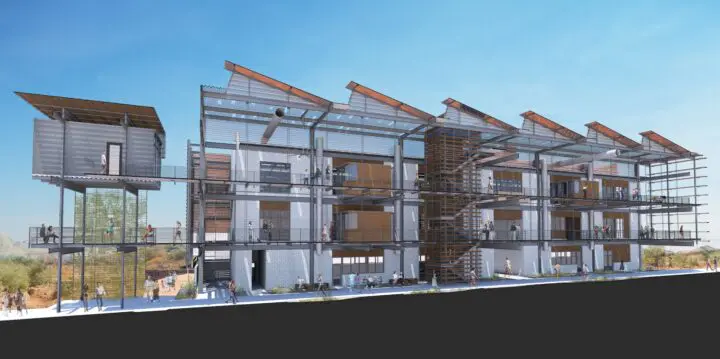
Maximizing Shade & Thermal Comfort
The outdoor atria are engineered to maximize air flow and ventilation while limiting the impact of solar radiation on outdoor collaboration and circulation spaces. Campus circulation is routed through and in between campus buildings to minimize pedestrian exposure to the intense exposures of Arizona. Roof monitors harvest daylight and push it deep into the lower levels of the atria. Building circulation is pushed out to the atria thereby significantly reducing the amount of conditioned square footage.
Existing Conditions
Arizona State University Polytechnic Academic District
Consultants
- Architect of Record: RSP Architects
- Design Architect: Lake Flato Architects
- Landscape: Ten Eyck Landscape Architects
- Structural: Paragon
- MEP: Energy Systems Design
- Civil: Wood, Patel & Associates
- Acoustics: McKay Conant Brook
- AV: Jeremiah & Associates
- Lab Planning: RFD
- General Contractor: DPR
- Photography: Bill Timmerman
Awards
- 2012 American Society of Landscape Architects Honor Award
- 2012 AIA Committee on the Environment Top Ten Projects Award
- 2011 Texas Society of Architects/AIA Design Award
- 2009 Architect Magazine Design Award
- 2009 AIA Committee of Architecture for Education Award






